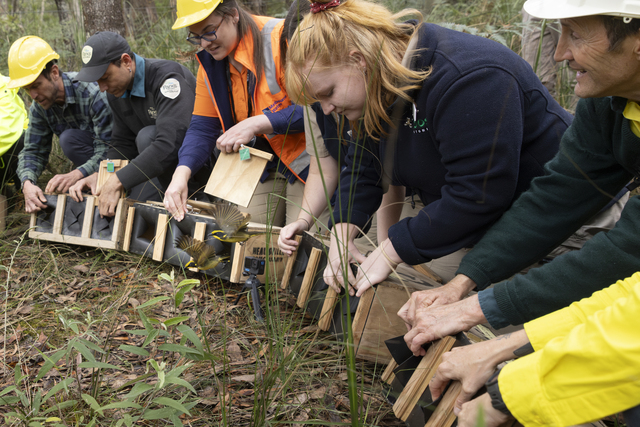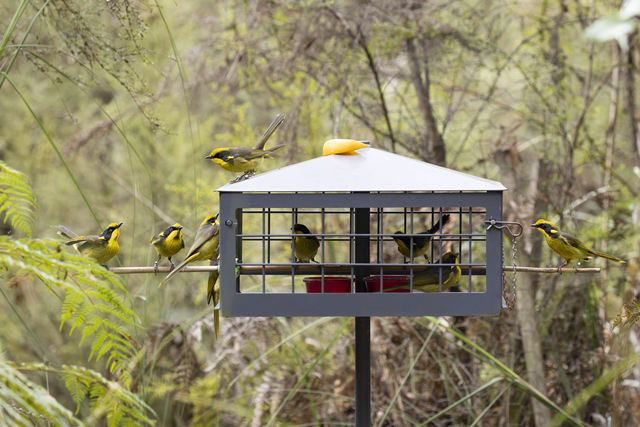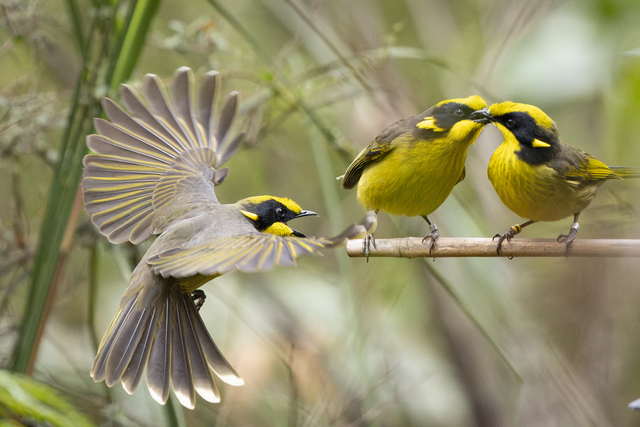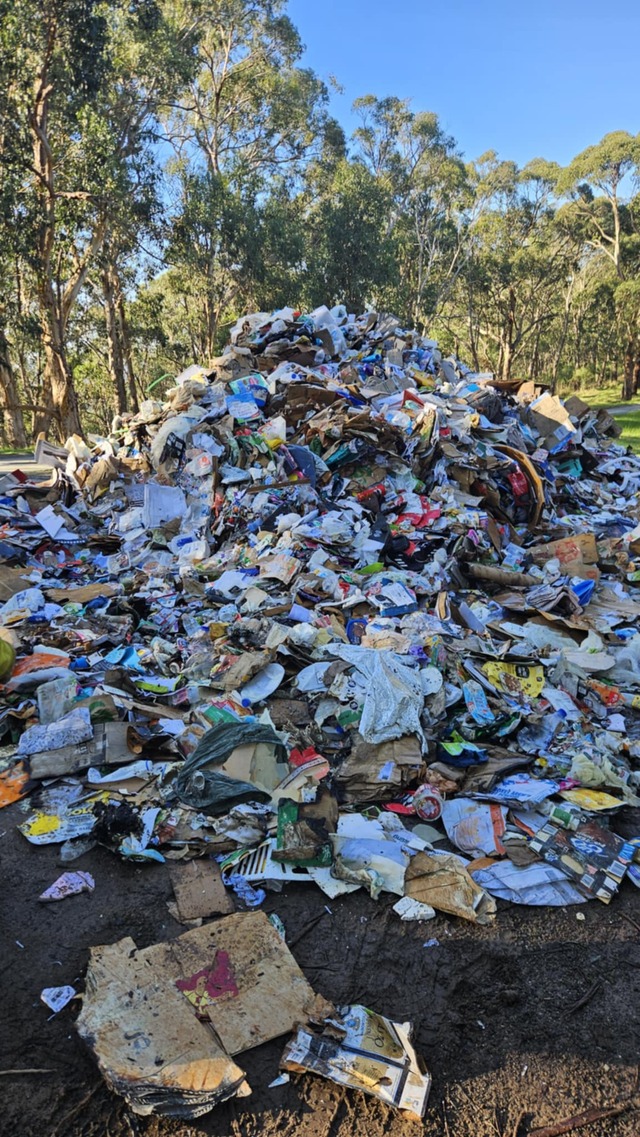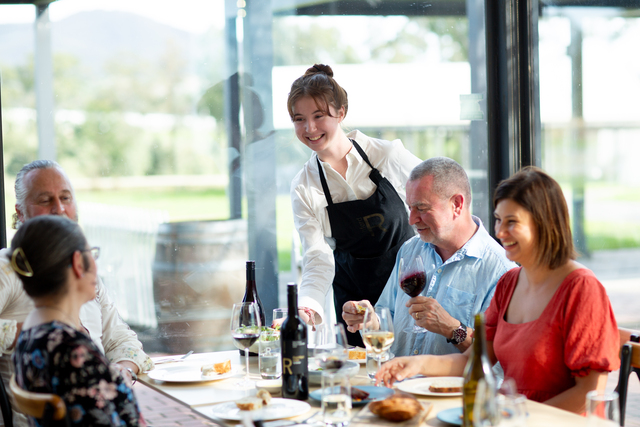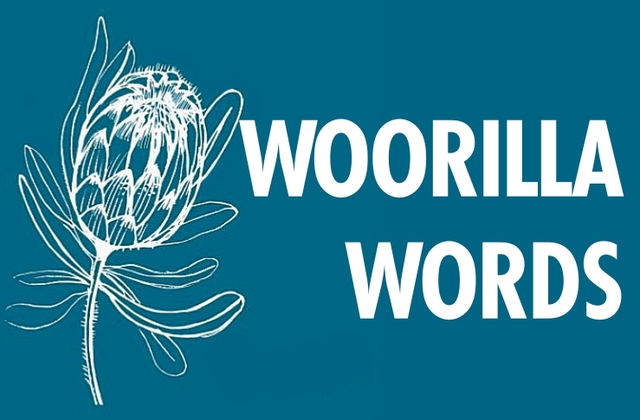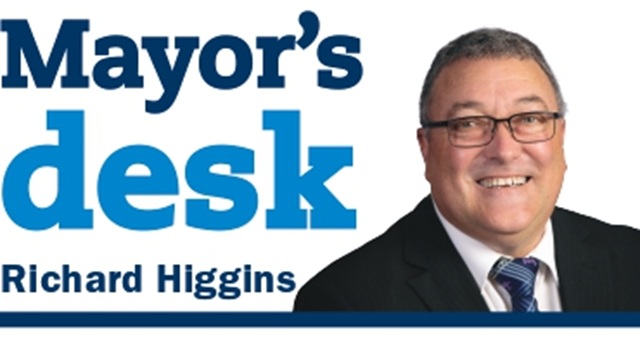Another step in the road to recovery for the critically endangered Helmeted Honeyeater was made on Friday 19 April with 18 more birds released into the Yellingbo Nature Consevation Area.
The zoo-bred birds were raised at Healesville Sanctuary through Zoos Victoria’s conservation breeding program and will be calling Yellingbo home alongside the established wild population already there.
12 more are set to be released in the forest near Warburton to join another population in the near future, ensuring there will be multiple populations of genetically-diverse birds.
Healesville Sanctuary Bird Keeper Monique Winterhoff said it is incredibly rewarding to see 30 more Helmeted Honeyeaters released into the wild.
“Not only as a zookeeper who has watched these birds grow up from tiny three-gram eggs, but also knowing the important role they will play in the conservation of this subspecies,” she said.
“The release birds are a combination of juveniles bred in the latest breeding season at Healesville Sanctuary as well as adults that have already successfully produced offspring and who are recommended for release to the wild.”
The two separate populations in Yellingbo and Warburton are carefully maintained to ensure the species won’t be wiped out in the event of a catastrophic bushfire or disease, as well as to ensure the diversity of the species.
Ms Winterhoff said the juvenile Helmeted Honeyeaters are housed in social groups which allows them to build up important social skills and fitness prior to release.
“All release birds are quarantined from the rest of the birds at Healesville Sanctuary 30 days before being released. They undergo checks by veterinarians at our Australian Wildlife Health Centre and have unique colour and numbered bands placed on their legs so that each bird can be identified individually once released into the wild,” she said.
“The teams that work with Helmeted Honeyeaters in the wild and at Healesville Sanctuary work closely with each other,”
“By understanding the genetics of the populations at Yellingbo and Warburton, we can select which birds to release, and which are bred at Healesville Sanctuary, to ensure the Helmeted Honeyeater population is as genetically diverse as possible.”
The population of Helmeted Honeyeaters in the wild has tripled in the last three decades following direct and sustained conservation efforts, with the wild population now believed to be above 250 across the two Upper Yarra locations.
President of the Friends of the Helmeted Honeyeater group Virginia Wallace attended the release and said it was a great moment to be able to open one of the boxes herself and let the birds escape and fly out.
“DEECA, Parks Victoria and Zoos Victoria do an amazing job and they stayed out there for the day observing the birds, recording where they are and what they’re doing to make sure that they’re settled in properly and that they’re accessing feed stations,” she said.
“We’re a volunteer group and thousands of volunteers have planted hundreds and thousands of plants to try and increase habitat for the species because that’s the main issue,”
“So it’s great that we can work together and we can bring the community engagement and volunteering side and DEECA, Parks Victoria and Zoos Victoria can bring their science-based approach and we can all come together to protect this species.”
The Department of Energy, Environment and Climate Action (DEECA), Zoos Victoria, Parks Victoria, The Friends of the Helmeted Honeyeater Inc., Melbourne Water, Monash University, University of Melbourne, Yarra Ranges Council, Cardinia City Council, Greening Australia, Trust for Nature are all actively involved in the conservation efforts for the feathered faunal emblem.
DEECA Senior Ornithologist Bruce Quin said he importance of the release of zoo-bred birds cannot be understated.
“It continues our work to increase both size and genetic diversity of this wild population.”

